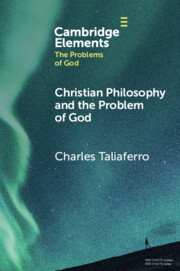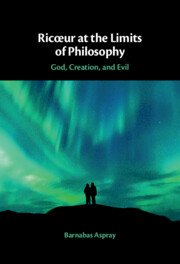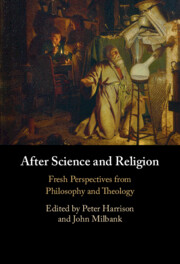58 results
Attractors are not algebraic
- Part of
-
- Journal:
- Compositio Mathematica / Volume 160 / Issue 5 / May 2024
- Published online by Cambridge University Press:
- 18 April 2024, pp. 1073-1100
- Print publication:
- May 2024
-
- Article
-
- You have access
- HTML
- Export citation
Chapter 8 - Romanticism
- from Part II - Inspiration and Expression
-
-
- Book:
- Vaughan Williams in Context
- Published online:
- 28 March 2024
- Print publication:
- 04 April 2024, pp 70-77
-
- Chapter
- Export citation
19 - Love, Theft, and Transcendence
- from Part V - Images and Screens
-
-
- Book:
- Jazz and American Culture
- Published online:
- 09 November 2023
- Print publication:
- 30 November 2023, pp 291-304
-
- Chapter
- Export citation
1 - The Life of God
- from Part I - The Divine-Human Life
-
- Book:
- An Augustinian Christology
- Published online:
- 02 November 2023
- Print publication:
- 16 November 2023, pp 37-71
-
- Chapter
- Export citation
Conclusion
-
- Book:
- Knowledge, Faith, and Early Christian Initiation
- Published online:
- 11 October 2023
- Print publication:
- 19 October 2023, pp 210-216
-
- Chapter
- Export citation
Chapter 16 - Interviews
- from Part II - The Literary Works
-
-
- Book:
- W. G. Sebald in Context
- Published online:
- 24 August 2023
- Print publication:
- 07 September 2023, pp 135-144
-
- Chapter
- Export citation

Christian Philosophy and the Problem of God
-
- Published online:
- 12 June 2023
- Print publication:
- 06 July 2023
-
- Element
- Export citation
The eropolitical compound: immanence, transcendence and a parasitic operation of patriarchy in Sanskrit literature
-
- Journal:
- Bulletin of the School of Oriental and African Studies / Volume 86 / Issue 1 / February 2023
- Published online by Cambridge University Press:
- 05 May 2023, pp. 79-100
- Print publication:
- February 2023
-
- Article
-
- You have access
- Open access
- HTML
- Export citation
Bullshit for you; transcendence for me. A commentary on “On the reception and detection of pseudo-profound bullshit”
-
- Journal:
- Judgment and Decision Making / Volume 11 / Issue 1 / January 2016
- Published online by Cambridge University Press:
- 01 January 2023, pp. 121-122
-
- Article
-
- You have access
- Open access
- HTML
- Export citation
Chapter 2 - Transcendental Social Ontology in Husserl and Heidegger
- from Part I - Being-In-the-World and Being-With
-
- Book:
- Heidegger's Social Ontology
- Published online:
- 18 February 2023
- Print publication:
- 24 November 2022, pp 40-67
-
- Chapter
- Export citation
Chapter 7 - Others Expressive, Engaged and Exposed
-
- Book:
- Merleau-Ponty's <i>Phenomenology of Perception</i>
- Published online:
- 03 November 2022
- Print publication:
- 17 November 2022, pp 161-185
-
- Chapter
- Export citation
Chapter 1 - Spirituality and Religion in Psychiatry
-
-
- Book:
- Spirituality and Psychiatry
- Published online:
- 07 October 2022
- Print publication:
- 20 October 2022, pp 1-22
-
- Chapter
- Export citation

Ricœur at the Limits of Philosophy
- God, Creation, and Evil
-
- Published online:
- 18 August 2022
- Print publication:
- 25 August 2022
13 - Contemporary Religious Ecology
- from Part II - Histories
-
-
- Book:
- The Cambridge Companion to Christianity and the Environment
- Published online:
- 21 July 2022
- Print publication:
- 04 August 2022, pp 197-214
-
- Chapter
- Export citation
Chapter 6 - The Creative Trance and the Brain
-
- Book:
- The Creative Trance
- Published online:
- 02 June 2022
- Print publication:
- 09 June 2022, pp 80-96
-
- Chapter
- Export citation
Chapter 4 - Religion, Science and Magic
- from Part II - Beyond ‘Science and Religion’
-
-
- Book:
- After Science and Religion
- Published online:
- 05 May 2022
- Print publication:
- 19 May 2022, pp 75-143
-
- Chapter
- Export citation

After Science and Religion
- Fresh Perspectives from Philosophy and Theology
-
- Published online:
- 05 May 2022
- Print publication:
- 19 May 2022
8 - Hearing Another’s Voice
- from Part IV - Hearing Others
-
- Book:
- Music, Subjectivity, and Schumann
- Published online:
- 07 April 2022
- Print publication:
- 07 April 2022, pp 269-301
-
- Chapter
- Export citation



